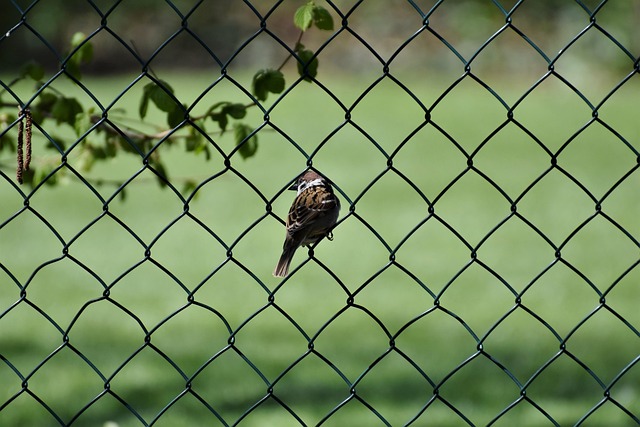In New Bedford, a well-maintained fence is not just about security; it enhances property value and creates a welcoming ambiance. However, fences often face common damages from weather, pests, and regular wear and tear. This article guides homeowners through the essential aspects of New Bedford fence repair and installation. From identifying typical issues like rot, holes, or broken posts to selecting materials that balance durability and aesthetics, we offer practical tips. Additionally, we provide a step-by-step installation guide and maintenance strategies to ensure your new or repaired fence stands the test of time.
- Understanding Common Fence Damages in New Bedford
- Choosing the Right Materials for Durability and Aesthetics
- Installation Process: Step-by-Step Guide for New Fences
- Maintenance Tips to Extend Fence Lifespan
Understanding Common Fence Damages in New Bedford
Fences in New Bedford, like anywhere, are subjected to various elements and potential damages over time. Understanding common issues can help homeowners prepare for repairs or prompt action when problems arise. One frequent issue is rot, often caused by prolonged exposure to moisture, especially if wood treatments haven’t been applied regularly. This can lead to weakened fence posts and boards, making the structure unsafe and unsightly.
Another widespread problem is damage from pests like termites or carpenter ants, which can infiltrate wooden fences and cause significant structural harm. Environmental factors such as strong winds, lightning, or heavy snowfall can also contribute to fence damages. Additionally, vehicles or pets accidentally colliding with fences can result in broken or bent rails, requiring immediate repair for safety and aesthetic considerations.
Choosing the Right Materials for Durability and Aesthetics
When it comes to fence repair and installation, selecting the right materials is half the battle won. At New Bedford Fence Repair and Installation, we understand that each property is unique, with its own style and requirements. That’s why we offer a diverse range of fencing options, ensuring you get exactly what complements your space. From sturdy wood to low-maintenance vinyl, each material has its advantages. For instance, wood fences are renowned for their natural beauty and ability to enhance curb appeal, but they demand regular maintenance to prevent rot and insects.
On the other hand, vinyl fences are virtually maintenance-free, resilient against fading and cracking, and provide an array of stylish designs. They’re an excellent choice for those seeking both durability and aesthetics. Our expert team can guide you through these options, helping you make an informed decision that aligns with your needs and preferences, ensuring a beautiful and long-lasting fence.
Installation Process: Step-by-Step Guide for New Fences
The installation process for new fences begins with careful planning and preparation. First, assess your property and decide on the type of fence best suited to your needs and landscape. Measure the perimeter and mark the boundary lines clearly. Next, obtain any necessary permits from local authorities before gathering all required materials and tools, including posts, rails, panels, concrete, fasteners, and a post-hole digger.
Dig holes for the fence posts at predetermined locations, ensuring they are deep enough to provide stability. Place the posts in the holes and use wooden beams or rails to create the fence frame. Secure everything with sturdy fasteners. Then, attach the fence panels to the frames using brackets or nails, leaving gaps for expansion and contraction. Fill in any gaps with sealing compound once the panels are firmly in place. Finally, ensure all hardware is secure, check for level, and celebrate your new fence!
Maintenance Tips to Extend Fence Lifespan
Regular cleaning and inspection are key to maintaining your fence’s lifespan. Remove any debris, such as leaves or twigs, that can accumulate over time, as this may lead to rot or pest infestations. Check for loose posts or panels, and tighten as needed using the appropriate tools. Repaint or reseal wooden fences periodically to protect against weather damage and extend their durability.
Additionally, consider trimming nearby trees and shrubs to prevent branches from damaging the fence. Ensure proper drainage around the fence line to avert water accumulation, which can cause rot. By following these simple maintenance practices, you can significantly prolong the life of your fence and keep it looking its best for years to come.
